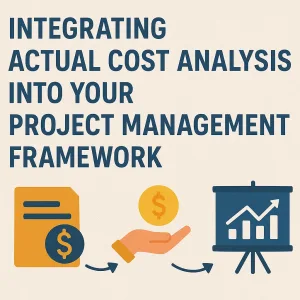Introduction to Vendor Management Lifecycle
The vendor management lifecycle (VML) serves as a critical framework for overseeing relationships with external suppliers and service providers. This lifecycle encompasses several key phases that guide organizations in effectively managing their vendor interactions, ensuring alignment with business objectives, compliance with regulations, and the delivery of value throughout the engagement.
Defining the Vendor Management Lifecycle and Its Phases
The vendor management lifecycle consists of several stages that begin with the identification of potential vendors and extend through to the final offboarding of those relationships. The primary phases include:
- Vendor Identification: This initial stage involves recognizing potential suppliers that can meet the organization’s needs.
- Vendor Qualification: Here, organizations assess vendors for their ability to mitigate risks and meet compliance standards.
- Onboarding: This phase ensures that vendors are integrated into the organization’s processes, with proper information management and training.
- Performance Evaluation: Continuous assessment of vendor performance is crucial to ensure that they meet the agreed-upon service levels and deliverables.
- Offboarding: The final stage involves the systematic termination of vendor relationships, ensuring that all contractual obligations are fulfilled and knowledge transfer is completed.
Each of these phases is essential for maintaining a structured and consistent approach to vendor management, which ultimately contributes to the success of projects and initiatives.
Importance of Effective Vendor Management in Successful Project Outcomes
Effective vendor management is pivotal for achieving successful project outcomes. It establishes a transparent and systematic structure that facilitates strategic decision-making, reduces risks, and maximizes efficiency. By actively managing vendor relationships, organizations can ensure compliance with regulations and create value, which is particularly important in project management where timelines and budgets are often tight. A well-managed vendor relationship can lead to improved collaboration, innovation, and responsiveness to changing project needs, thereby enhancing overall project performance and stakeholder satisfaction.
Change Management in the Context of Vendor Relationships
Change management plays a vital role in navigating transitions within vendor relationships. As projects evolve, the need for adjustments in vendor engagement may arise due to shifts in project scope, budget constraints, or changes in organizational strategy. Effective change management strategies can help mitigate disruptions during these transitions. This includes:
- Clear Communication: Establishing open lines of communication with vendors to discuss changes and expectations.
- Stakeholder Engagement: Involving key stakeholders in the change process to ensure alignment and support.
- Training and Support: Providing necessary training and resources to vendors to adapt to new processes or requirements.
By integrating change management principles into the vendor management lifecycle, project leaders and change managers can foster resilient vendor relationships that adapt to evolving project demands, ultimately leading to smoother transitions and successful project outcomes.
Understanding Change Management in Vendor Relationships
Change management is a structured approach to transitioning individuals, teams, and organizations from a current state to a desired future state. In the context of vendor relationships, it is crucial for ensuring that changes do not disrupt ongoing projects or the overall supply chain. Effective change management helps maintain alignment with business objectives, mitigates risks, and fosters positive vendor relationships, which are essential for project success.
Relevance of Change Management to Vendor Relationships
Vendor relationships are dynamic and can be influenced by various internal and external factors. Change management plays a vital role in these relationships by:
- Facilitating Communication: It ensures that all stakeholders are informed about changes, fostering transparency and trust.
- Minimizing Disruption: By managing transitions effectively, organizations can avoid disruptions that may arise from changes in vendor agreements or performance expectations.
- Enhancing Collaboration: Change management encourages collaboration between project teams and vendors, which is essential for adapting to new circumstances and maintaining service quality.
Common Triggers for Change in Vendor Relationships
Several factors can trigger changes in vendor relationships, including:
- Contract Renewals: As contracts come up for renewal, organizations may reassess their vendor relationships, leading to negotiations or changes in terms and conditions.
- Performance Issues: If a vendor fails to meet performance expectations, it may necessitate a change in the relationship, whether through renegotiation, seeking alternatives, or implementing corrective actions.
- Strategic Shifts: Changes in organizational strategy, such as entering new markets or adopting new technologies, can impact vendor relationships, requiring adjustments to align with new business goals.
Impact of Unmanaged Changes on Project Timelines and Outcomes
Failure to manage changes in vendor relationships can have significant repercussions, including:
- Delays in Project Timelines: Unmanaged changes can lead to miscommunication and confusion, resulting in delays that affect project delivery schedules.
- Increased Costs: Disruptions caused by unmanaged changes may lead to additional costs, whether through expedited shipping, last-minute vendor changes, or penalties for non-compliance.
- Compromised Quality: If changes are not communicated effectively, the quality of goods or services may suffer, impacting the overall success of the project and potentially damaging the organization’s reputation.
Key Strategies for Smooth Transitions
Managing changes in vendor relationships is a critical aspect of project management, particularly during transitions that can impact project outcomes. Here are some actionable strategies to ensure these changes are navigated smoothly:
- Foster Open Communication: Establishing clear lines of communication with vendors is essential throughout the change process. Open dialogue helps to build trust and ensures that all parties are aligned on expectations and objectives. Regular updates and feedback sessions can help identify potential issues early, allowing for timely resolutions [6][14].
- Engage Stakeholders: Involving key stakeholders early in the change process is crucial for securing buy-in and support. Stakeholders can provide valuable insights and resources that facilitate smoother transitions. Their involvement also helps to ensure that the changes align with broader organizational goals, which can enhance overall project success [5][8].
- Develop a Change Management Plan: A structured approach to managing vendor changes is vital. This plan should outline specific timelines, responsibilities, and processes for implementing changes. By having a clear roadmap, project leaders can minimize disruptions and ensure that all team members and vendors understand their roles during the transition [9][10].
- Monitor Vendor Performance: Regularly assessing vendor performance and their readiness for change is essential. Utilizing key performance indicators (KPIs) can help project managers evaluate how well vendors are adapting to new requirements or processes. Continuous performance evaluation allows for adjustments to be made proactively, ensuring that the vendor remains aligned with project goals [12][13].
By implementing these strategies, change managers and project leaders can effectively navigate transitions in vendor relationships, minimizing disruptions and enhancing the overall success of their projects.
Risk Management in Vendor Changes
Particularly when dealing with vendor relationships, change is an inevitable aspect that can significantly impact project outcomes. Effective risk management is crucial in navigating these transitions smoothly. Here are some strategies to identify and mitigate risks associated with vendor changes:
Identifying Potential Risks
- Service Interruptions: One of the most immediate risks during a vendor transition is the potential for service interruptions. This can occur if the new vendor is not fully integrated into the existing systems or if there are delays in the onboarding process. It is essential to assess the critical services provided by the vendor and identify any dependencies that could be affected during the transition.
- Quality Issues: Changes in vendors can lead to variations in the quality of products or services. New vendors may have different standards, processes, or capabilities, which can result in inconsistencies. It is vital to evaluate the new vendor’s track record and ensure they meet the quality expectations set by the organization.
- Compliance and Regulatory Risks: When transitioning to a new vendor, there may be compliance and regulatory considerations that need to be addressed. Understanding the legal implications and ensuring that the new vendor adheres to industry regulations is crucial to avoid potential penalties or disruptions.
Developing a Risk Mitigation Strategy
- Comprehensive Vendor Assessment: Before making a transition, conduct a thorough assessment of the new vendor. This includes reviewing their financial stability, operational capabilities, and past performance. A well-informed selection process can significantly reduce the risk of service interruptions and quality issues.
- Clear Communication: Establishing open lines of communication with both the outgoing and incoming vendors is essential. This ensures that all parties are aware of expectations, timelines, and responsibilities. Regular updates can help identify potential issues early on, allowing for timely interventions.
- Training and Support: Providing adequate training and support to the new vendor can help mitigate risks associated with service quality. Ensuring that they understand your organization’s processes and standards will facilitate a smoother transition and reduce the likelihood of errors.
Implementing Contingency Plans
- Backup Vendors: Having backup vendors in place can provide a safety net during transitions. If the new vendor fails to meet expectations or if there are unforeseen issues, having an alternative vendor ready can help maintain continuity in service delivery.
- Phased Transition Approach: Instead of a complete switch-over, consider a phased approach to vendor transitions. This allows for gradual integration and provides an opportunity to address any issues that arise without disrupting the entire project.
- Monitoring and Evaluation: After the transition, continuously monitor the performance of the new vendor against established metrics. Regular evaluations can help identify any emerging risks and allow for prompt corrective actions to be taken.
By proactively identifying risks, developing robust mitigation strategies, and implementing contingency plans, change managers and project leaders can navigate vendor transitions with minimal disruption. This approach not only safeguards project continuity but also fosters strong, resilient vendor relationships that can adapt to future changes.
Communication Best Practices During Transitions
Effective communication is a cornerstone of successful vendor management, especially during transitions. Change managers and project leaders must prioritize clear and consistent communication to navigate vendor relationship changes smoothly. Here are some key strategies to enhance communication during these critical periods:
- Develop a Comprehensive Communication Plan: Establishing a well-structured communication plan is essential for informing all stakeholders about upcoming changes. This plan should outline the objectives, key messages, stakeholders involved, and a timeline for communication. By doing so, you ensure that everyone is on the same page and understands the implications of the changes [1][5].
- Utilize Multiple Communication Channels: To effectively convey messages and updates, leverage various communication channels. This can include meetings, emails, newsletters, and even project management software. Using a mix of channels helps reach different stakeholders effectively and ensures that important information is disseminated widely [6][15]. For instance, regular meetings can provide a platform for real-time discussions, while emails can serve as a formal record of communications.
- Encourage Feedback and Foster Transparency: Actively seeking feedback from both vendors and stakeholders is crucial for maintaining transparency. This practice not only helps in addressing concerns but also builds trust in the relationship. By creating an open environment where stakeholders feel comfortable sharing their thoughts, you can identify potential issues early and work collaboratively towards solutions [2][4].
- Segment Stakeholders for Targeted Communication: Identify and segment your stakeholders based on their roles and how they are impacted by the changes. Tailoring your communication to different groups—such as executives, management, and front-line employees—ensures that the information is relevant and comprehensible to each audience [5][9]. This targeted approach can help mitigate confusion and enhance engagement.
- Maintain Open Lines of Communication: Throughout the transition, it is vital to keep communication channels open. Regular updates and check-ins can help reassure stakeholders and vendors that they are being kept in the loop. This ongoing dialogue can prevent misunderstandings and foster a collaborative atmosphere [2][3].
By implementing these communication best practices, change managers and project leaders can effectively manage vendor relationship changes, ensuring a smoother transition and minimizing disruptions. The emphasis on clear, transparent, and multi-channel communication not only supports the immediate transition but also strengthens long-term vendor relationships.
Measuring Success Post-Change
When dealing with vendor relationships, measuring the success of changes is crucial for ensuring that transitions are smooth and beneficial. Here are some strategies to evaluate the effectiveness of changes in vendor relationships:
- Define Success Criteria: Establish clear and specific success criteria for the new vendor relationship. This could include factors such as improved service delivery, cost savings, enhanced quality of products, or increased responsiveness. By having well-defined criteria, project leaders can create a benchmark against which the new relationship can be measured [1].
- Establish Performance Metrics: Develop metrics that will allow for the assessment of both performance and satisfaction levels post-change. These metrics might include on-time delivery rates, quality control measures, compliance with service level agreements (SLAs), and overall cost-effectiveness. Regularly reviewing these metrics will help in identifying whether the new vendor relationship is meeting the established success criteria [2][4].
- Collect Feedback: Implement a structured feedback mechanism to gather insights from both internal teams and vendors. This can involve surveys, interviews, or regular check-in meetings. Feedback should focus on various aspects of the relationship, such as communication effectiveness, problem resolution, and overall satisfaction. Analyzing this feedback will help identify areas for improvement and foster a culture of continuous enhancement in vendor relationships [3][8].
By focusing on these key points, change managers and project leaders can effectively navigate transitions in vendor relationships, ensuring that changes lead to improved outcomes and sustained success.
Conclusion
The significance of effectively managing changes in vendor relationships cannot be overstated. As organizations increasingly rely on external suppliers for goods and services, the ability to navigate transitions smoothly is essential for maintaining operational stability and achieving project success. A well-managed vendor relationship can significantly influence project outcomes, including cost, quality, and timelines, making it imperative for change managers and project leaders to prioritize this aspect of their work.
To facilitate smoother transitions, it is crucial to adopt the strategies discussed throughout this blog. These strategies include conducting thorough due diligence, maintaining open lines of communication, and implementing systems for continuous performance evaluation. By proactively managing vendor relationships and anticipating potential challenges, organizations can mitigate risks and foster collaboration, ultimately leading to enhanced project outcomes.
Find out more about Shaun Stoltz https://www.shaunstoltz.com/about/.
This post was written by an AI and reviewed/edited by a human.



